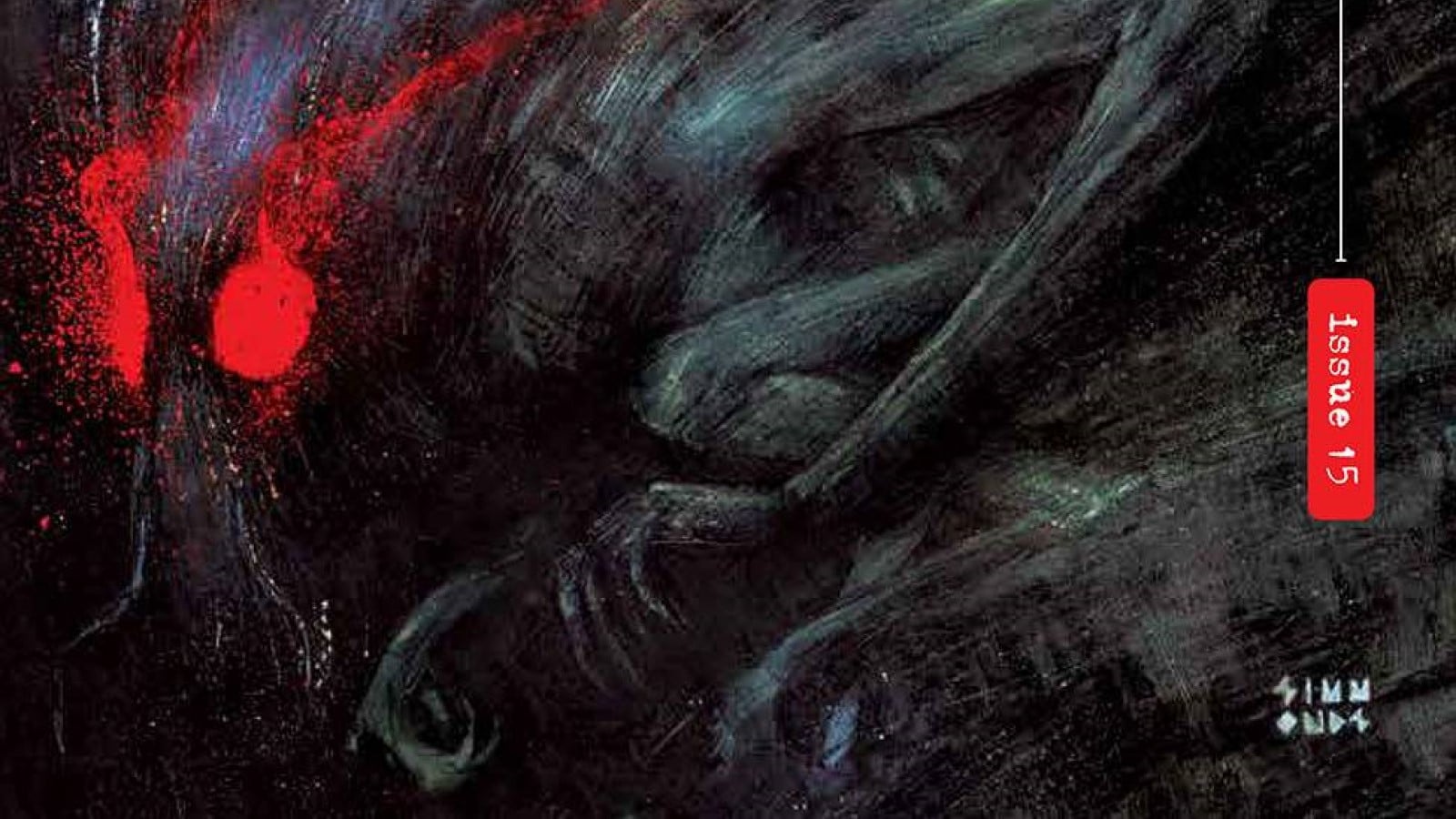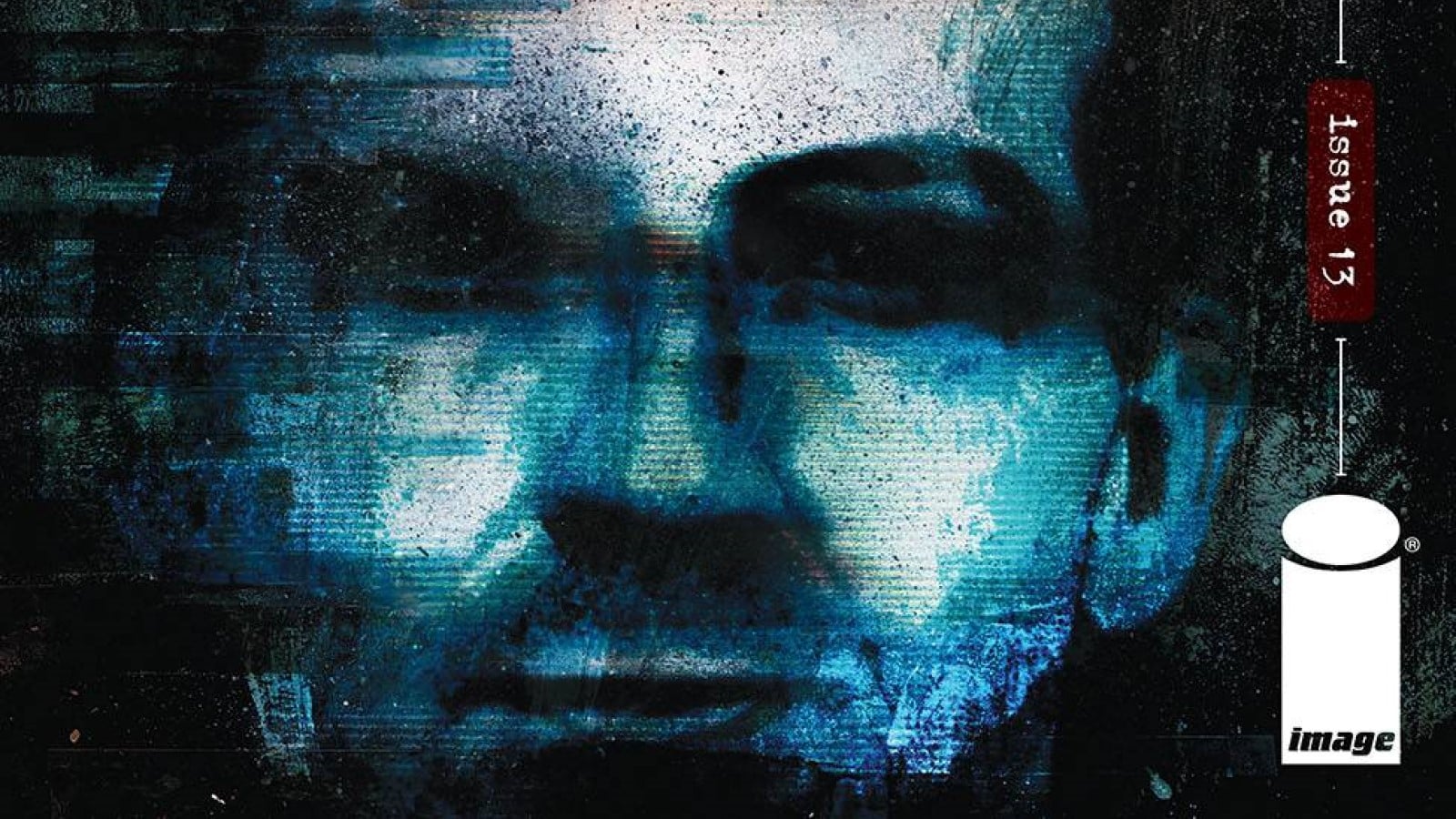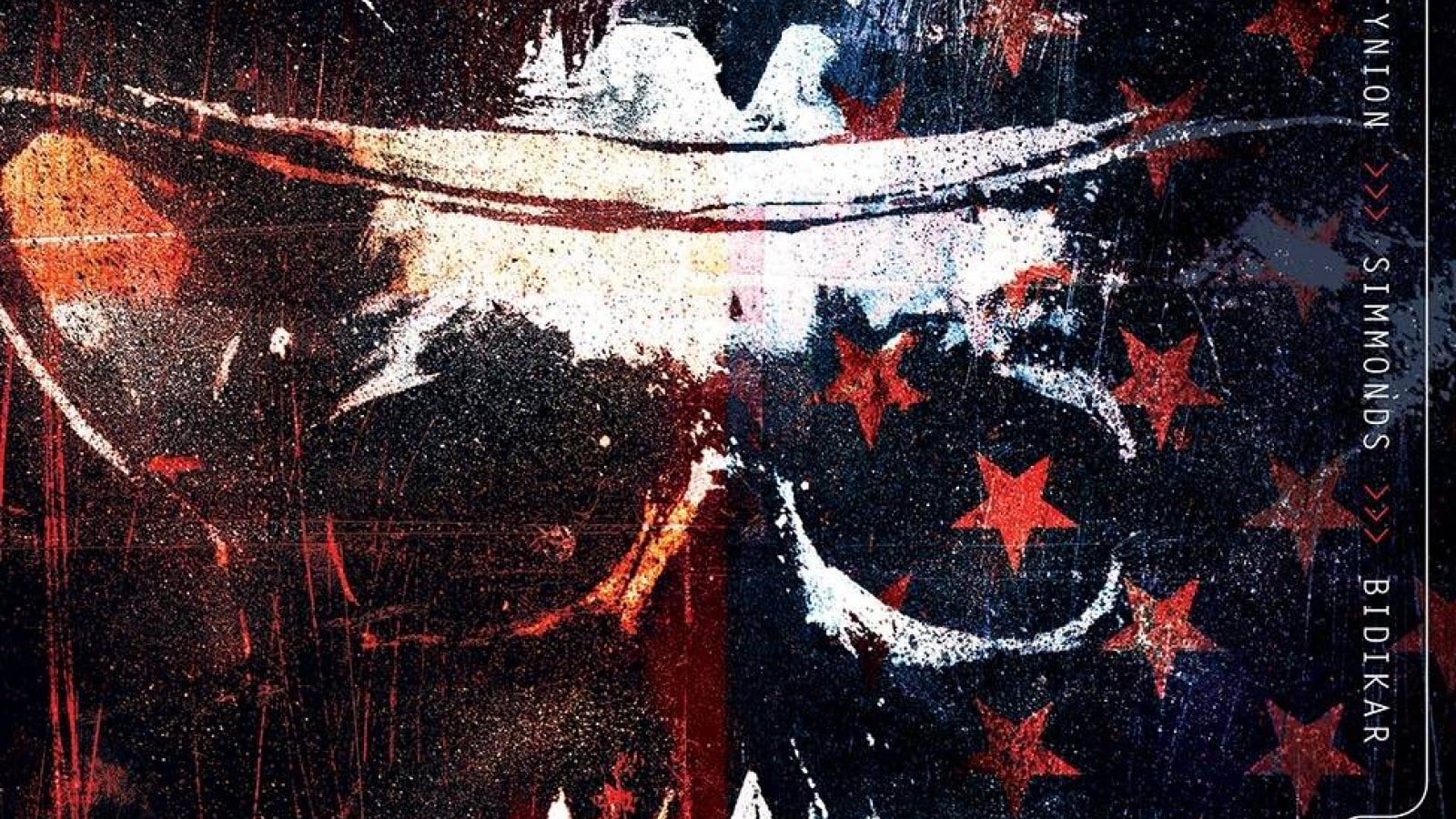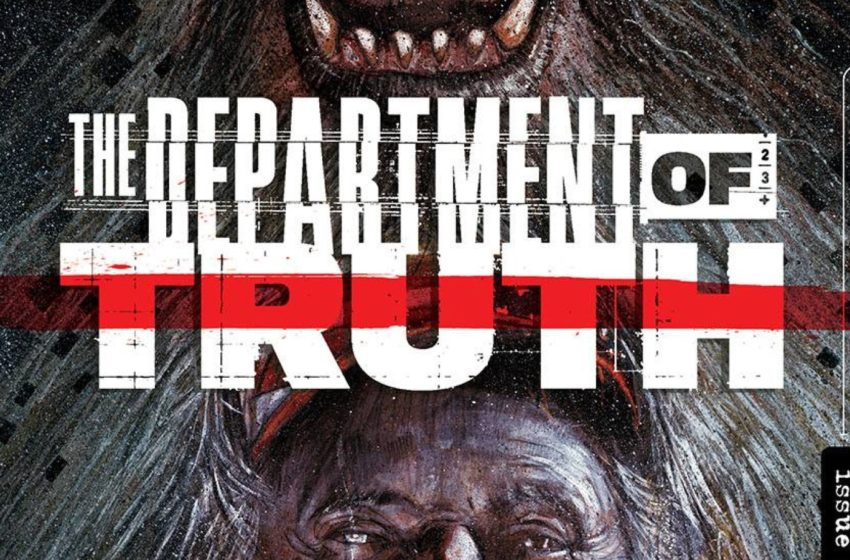While we wait for the series to begin its next arc following another cliffhanger (Maybe the would-be presidential assassin running the show is actually a physical manifestation of evil!), it’s time to go a little sideways into the archives of the government’s weirdest, spookiest bureau in Department of Truth #14 (written by James Tynion IV, drawn by John J. Pearson, lettered by Aditya Bidikar, designed by Dylan Todd and edited by Steve Foxe) and #15 (written by Tynion, drawn by David Romero, lettered by Bidikar, designed by Todd and edited by Foxe).
Will Nevin: Forrest, seems like it’s been a long ass time since we’ve done one of these. How the hell are you?
Forrest Hollingsworth: I’m good! I’ve detached a bit from the larger internet ecosystem in the new year, which has allowed me a lot more time for reading and studying, and the bunker construction is moving along well! That said, I don’t entirely have the internet situation figured out down here yet, so let’s move this along if we can … the hatch is open and all.
Will: I’m sad I didn’t get an invitation to your bunker, but I get it — those rations only hold out for so long. Still, you’re welcome to use my Hulu/HBO Max/Peacock logins until the shit kicks off.
You know, it’s been a longer ass time since we’ve taken up a “deviation,” one of the fill-in stories between Department of Truth arcs, and today, we’ve got two of them. To my mind, I think I’ve got three criteria for evaluating these issues: 1) whether the guest artist really brings something to the work, 2) whether the story adds something to the greater DoT canon and 3) whether the issue feels essential to the series. Is there anything you’d add as to how you think we should judge these?
Forrest: The only thing that comes to mind is whether the deviation also contains some modicum of worthwhile character development. Tynion is very good at the larger details, the research, the expository stuff, but without Cole at the center I can see readers being kind of put off by the idea of these picking up immediately after the cliffhanger of issue #13.
Luckily for us, revelations about Lee Harvey Oswald and Hawk himself abound. It’s a fair tradeoff.
Will: Revelations in our deviations. A turducken of Truth.
Deviation the Third: Rocket Man

Will: There’s a reason I — notable Terrible Comics Critic — listed the art up there first. John J. Pearson in issue #14 fucking murdered it — the Lee Harvey Oswald likenesses were spot on (Here’s your chance, by the way, if you’ve ever wondered what our most recent presidential assassin would look like without eyebrows) and I thought the overall visual presentation was just great.
Forrest: Pearson did a really fantastic job of championing Martin Simmonds’ trademark look in the main story, but also with layering and remixing things on top of it befitting of a deviation (I say “on top of” specifically because there’s such a layered, scrapbook, collage effect to the whole thing as it is). If we’re approaching appreciation for these from the angle of relevancy to the A-plot, I’d say the visual motifs here are not only complimentary to the main story, but essential as much as the narrative is.
The bits with Crowley in the Golden Dawn garb, missiles and mushroom clouds adorning him like a saint, and the imagery of Babalon (the Scarlet Woman) emerging from the fire with suited Greys, the bodies of Jack Parsons and L. Ron Hubbard collapsing before her, are especially effective. It elevates the story to a mythical feeling, a sense of surrealness that emulates the reverence and fear the narrator is espousing. I like it.
Will: Not to spoil things, but I liked this issue quite a bit more than the one that followed because of the stellar art and — to move things along in the discussion — what I thought was a more worthwhile exploration of the overall DoT narrative. To that end, I thought we got two critical (OK, maybe that word’s a bit strong) pieces of information in the backstories of both the Woman in Red and Hawk Harrison. The series’ typical “explain a nutty conspiracy thing” exposition was more fun in this issue too, touching on both L. Ron Hubbard and some of the weird AF scientists who would help America get to the moon. What did you think of the narrative elements in this issue?
Forrest: I only have a passing familiarity with Aleister Crowley and the teachings of Thelema, but it’s enough to say that after the canonization of Babalon’s name in a previous issue, I expected the story to continue along these lines.
Parsons, who was born with the first name “Marvel” by the way, is a well known eccentric in conspiracy communities (both for and against), and we’re still feeling the effects of Hubbard’s parasite-like, grift-laden attachment to notables like him today. If you’re going for any sort of relevant distillation of these circles, it would be impossible to miss them. It’s the natural next step, at least as far as the encompassing plot outside of Cole goes (still not sure how I see that picking up).
Either way, I was pleasantly surprised by how close this one hewed to history. Nearly all of what’s said about Parsons is accurate, and if it isn’t it at least emulates what he thought at the time. The A-plot’s delivery by Hawk and others of dubious intent often throws a lot of that into question, but here it’s delivered by someone we don’t really have reason to doubt, and the canonization of ideas the narrative has been circling since issue #1 feels vital, essential, especially in name dropping the Aeon of Horus.
Guess I have to read up on sex magick again.
Will: There’s really nothing I could follow that up with, but here’s one random question for you: We’ve got a couple of panels of Oswald that are pencils only. What do you think is the deal with that?
Forrest: I think it’s just a unique visual emphasis. It’s moments where Oswald is taken out of reality, the strength of the bunker-made hooch and the shock of Hawk’s spitting on him. Personally, I think it’s a bit of a neat and auterish flair, and I wish more artists did inexplicable or only metaphorically notable things like that.
Will: The hooch panel looked like it was taken directly from the moment he was shot. If so, nice fuckin’ job.
Deviation the Fourth: Mothman

Will: As I wrote up there, I’m a lot harder on this issue because 1) the art to my eye isn’t as strong and 2) the prose-heavy approach doesn’t work for me, especially when we’re reading about Mothman encounters sans emotional investment. Overall, what did you think of #14?
Forrest: You’re not alone in that. Mothman is my most favorite conspiracy-adjacent topic, and after much heavy-handed narrative foreshadowing, I was a little disappointed with the execution of this one.
First things first though, you mentioned that the art isn’t as strong as elsewhere, and I mostly agree with regard to the Mothman bits, which replicate pretty much all of the traditional imagery of the creature, but I almost wonder if that’s by design elsewhere. I found the surreal appearance and deployment of Indrid Cold (a very famous alien entity, by the way) to be effective. The simplicity of the design, the recurrence of a notable feature, it’s memorable just like stories about him always have been; you can see why it’s stuck around for so long. In fact, Romero’s take on him reminds me a lot of the “Ever Dream This Man” image, another that’s still bandied about today, in its minimal design but upsetting implementation:
Will: Still, we did get a few story nuggets in this issue in addition to the Mothman and Indrid Cold creepiness with the disclosure that Oswald goes missing for a bit and Doc may suspect him of being a tulpa — or at least being too closely similar to one for comfort. Did those info drops do anything for you? What about the Mothman stuff? That work for ya?
Forrest: In contrast to the talk of Crowley and Parsons in the previous issue, the way that this issue’s plot hews closely to history is kind of … rote. It’s mostly a retelling or re-visualization of the more popular Mothman encounters, ones that are covered in nearly all writing and documentaries about the phenomenon, without much novelty. We don’t learn more about Mothman, we don’t learn much more about Lee or Doc, it’s just kind of going through the motions. There’s a cliffhanger that implies a bit more to come — and I like the idea that the Wild Fictions have an upperhand on the Department in ideological warfare because the Department does, in fact, exist — but in terms of relevancy, the preceding issue is much more effective.
Ultimately, now that we’ve got Tynion’s Substack work to compare to, I would say this felt a lot more like one of those than it did a proper issue, but I don’t think it’s an abject failure either. It’s mostly perfunctory.
Will: I think the Mothman pinups were an interesting approach to a more documentary style, but if you’re going to do that, there’s got to be more flair and pizazz than what we got here. One thing that made me curious: In this issue, Doc is giving a post-mission debrief to the founder of the Department, a big cheese whose name has been “redacted” from what we’re reading. Are we being set up for a reveal later, or am I reading too much into this? What if Kennedy founded the Department and faked his assassination? That’d be weird, wouldn’t it?
Forrest: A redaction is an implication of information worth knowing.
Will: Goddamn, that’s a line right there.
Forrest: A line? What line? They tapped the line?
Well … ahem anyways, Will, I had fun talking with you again, but I have to go. The HOA doesn’t know I built this, and some nosy Nelly is in the backyard. Till next time!
An Eye for an Eye, A Truth for a Truth
- Hitler’s ties to the occult have largely been exaggerated or fictionalized, but we sure got some great Wolfenstein games, didn’t we?
- Masturbating in a sandstorm doesn’t seem like ideal conditions, but who are we to yuck someone’s yum?
- Calling it now: We’ll eventually learn in this series that “Havana Syndrome” is really exposure to tulpas.







